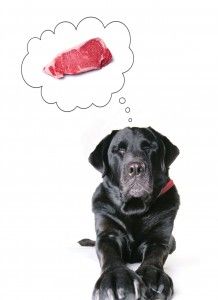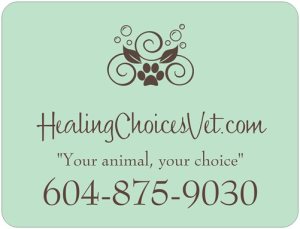The main reasons why we recommend a raw diet are:
• Dogs and cats are carnivores, so their entire body from nose to tail is designed to eat raw meat
• They should get hydration from the food they eat, through digestion. They get the benefit of this from raw meat
• The enzymes and bioavailability of nutrients in raw are essential to their optimal health
• It helps their bodies become more acidic, creating a naturally unfriendly environment for parasites and bacteria
• It helps promote healthier teeth and gums
• It is one of the best preventions against disease and promotes a healthier, longer life
If your dog or cat is currently on a dry diet, we recommend first transitioning them to a grain free, human grade canned food. We advise our clients to feed dry in the morning and canned in the evening or vice versa for a few days, then remove the dry food and replace it with canned. Always ensure they are eating adequate amounts of food, especially cats who can get very sick, very quickly if they don’t eat. For animals really addicted to dry food, you can also mix a little canned into the dry and gradually increase the amount of canned and decrease the dry. Do this for as long as it takes to get them onto canned food.
Once on canned food, you can mix a little raw (dehydrated raw is also a good option) into the canned and again gradually increase the raw and decrease the canned. A caution NEVER to mix raw with dry food! It can cause serious gastrointestinal upset as it requires two very different digestive processes. The transitioning process can actually be pretty quick, depending on how much your dog or cat likes raw and whether they have any underlying health issues (especially GI problems). If they are experiencing any GI reaction (runny stool or vomiting) then slow down to let their bodies adjust to the change.
What to feed?
A raw diet for dogs should contain 50% muscle meat, 15% ground bone, 10% organs (kidney, liver and heart) and 25% veggies. For dogs you can choose beef, chicken, turkey, lamb or some of the more exotic meats like buffalo, ostrich, venison etc. Fish, like salmon, herring and sole can also be fed periodically but keep in mind fish has less caloric value so you need to feed more. We do not recommend feeding pork (difficult to digest and prone to parasites). Salmon must not be fed fresh! Freeze it in a fridge freezer for at least 14 days or in a deep freezer for 7 days. The freezing process kills a dangerous parasite called Flukes, which is common in Salmon.
Cats can have higher protein and have a higher organ requirement. Feline raw diets should contain 60% muscle meat, 15% bone, 20% organs and 5% veggies. Cat should not be fed red meat exclusively. They should have some kind of poultry like chicken, turkey or quail at least 50% of the time (if they will eat it!) Good veggies include: Yam, sweet potato, chard, bok choy, kale, zucchini, and a variety of greens (spinach is OK but in small amounts as it is high in calcium). Veggies can be pureed or cooked and mashed. Fruit can also be included like apples, pears and blueberries.
DO NOT FEED: tomato, peppers, eggplant, onions, grapes, raisins, (broccoli is not recommended for hypothyroid dogs but OK in small amounts if that is not a concern) Raw bones (turkey necks, chicken necks, lamb necks, beef or buffalo shank and marrow) are an essential part of the diet but NEVER feed raw bones until your animal has been on a fully raw diet for at least 3-4 weeks, so they build up the digestive enzymes to digest bone. If you are not feeding bones, or if the diet does not have ground bone added, you must be sure to add bone meal. If you are feeding turkey, chicken or lamb necks, be sure to include that in their total food volume as they will eat the whole thing! Many dogs and cats can only handle a bone every other day or every 3 days. A bone every 3 days is a good place to start and if stools are too hard or dry cut back on the bones. Too much bone can lead to constipation! Hard, dry, crumbly stools mean too much too.
Feeding guidelines in general are 100-200 grams (3.5-7 ounces) of food per 10 pounds of body weight, 100 gr. for a less active animal, 200 gr. for active or higher strung animals. It is a very general guideline, you feed based on their hunger level and where they are maintaining a good weight. A note that puppies and kittens can eat up to 4 times the amount of an adult as they are growing and can be fed up to 4 times a day. They need to be weighed regularly to make sure they are gaining weight appropriately. Many companies are making prepared raw food for dogs and cats. In choosing a brand, it is ideal to feed hormone and antibiotic free meat. We prefer free range and ethically raised animals.
Supplements: We recommend a good fish oil for EFA’s (look for small, short lived, fast moving fish like sardines and anchovy-lessoning the buildup of heavy metals – recommend Ascenta Oil for Dogs and Cats), a good Multi Vitamin/ mineral like Canine Plus and NuCat from Vetri Science and a Probiotic for gut health (Olie Naturals, PB8, Udo’s Super 8)
Warning: Following the above recommendations may result in fresher breath, a shinier coat, healthier stools, less body odor and a decrease in water consumption (which is perfectly normal as your pet will be absorbing moisture from the food they eat!), more energy and increased health and longevity!

